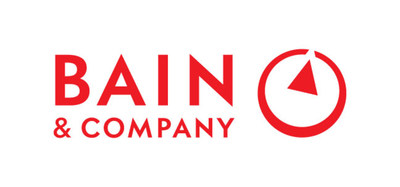Rise Of Ambulatory Surgical Centers Offers New Opportunities To Medtech Companies Willing To Compromise

NEW YORK, Sept. 25, 2019 /PRNewswire/ — Broad industry trends across healthcare are fueling the growth of ambulatory surgical centers (ASCs) as a steady rise in healthcare spending has encouraged the shift to outpatient care in the United States. According to a new report released this week from Bain & Company, Ambulatory Surgery Center Growth Accelerates: Is Medtech Ready?, ASCs offer surgical procedures at rates 35 to 50 percent lower than hospitals, fueling growth in the industry and saving the US healthcare industry an estimated $40 billion a year.

The number of procedures performed at ASCs is expected to grow from 23 million in 2018 to 27 million in 2021, according to Bain & Company estimates. While ASCs already handled more than 50 percent of all outpatient procedures in the U.S., that number is expected to increase steadily by 6-7 percent through 2021, with the majority of this growth being driven by orthopedic, spine and cardio procedures.
Payers are actively steering patients toward ASCs by lowering provider reimbursements for hospitals and lowering copayments at outpatient centers. This is creating new challenges and opportunities for medtech companies, who have largely ignored ASCs as a customer channel in favor of the historically dominant acute care hospitals.
“Medtech players that can adapt and simplify their own commercial models to fit the needs of the smaller, more nimble ASCs will reap the rewards of this evolving market,” said Todd Johnson, a partner with Bain & Company. “With no end in sight for the growth of outpatient centers, smart medtech players should be vying to take the lead in this space by offering flexible, low-cost solutions for ASCs without jeopardizing their offerings in the acute care environment.”
Cost-conscious ASCs present a variety of novel challenges to medtech companies seeking to win their business. According to Bain & Company research, 70 percent of physicians at ASCs have primary or direct influence over the purchasing of medical devices and equipment, compared to 45 percent of physicians at hospitals. Since payers reimburse ASCs less for the same procedure carried out in a hospital, ASCs are under constant pressure to reduce costs and improve efficiency. One way of driving down costs is to switch between medtech providers and, according to Bain & Company’s report, 60 percent of ASC physicians said they would switch manufacturers if offered a discount of 15 percent on their devices. Additionally, as ASCs are more geographically dispersed than traditional hospitals, medtech players will need to provide flexible options in their supply chain to service ASC facilities.
Winning in the ASC Market
As outpatient surgery centers continue to capture a growing share of healthcare profits, medtech companies need to rethink their sales and marketing strategies to succeed in this fast-growing market. Bain & Company lays out four bold steps that medtech providers can take to prioritize ASCs’ needs and compete effectively in the changing market:
- Developing low-cost service models. Medtech companies need to rethink their sales and service models to efficiently deliver the services that ASCs value most. Adjusting logistics and distribution models, including leaning more heavily on third-party logistics suppliers, can also help medtech players more efficiently deliver services and products to ASCs.
- Simplifying products. Medtech devices that minimize required inventory or increasing single-use offerings can help address ASC needs. Medtech companies can also create streamlined procedure-in-a-box kits, both less expensive and easier to manage logistically, that are designed for lower-acuity ASC procedures.
- Addressing a broader spectrum of ASC needs. New products and services may help address a wider spectrum of ASC needs to offset pricing pressure. For example, some medtech companies are offering IT services and inventory management as well as innovative partnerships to help ASCs focus on their core business and maintain a streamlined business model.
- Considering the new business model. Medical device companies may see new and innovative opportunities to collaborate with ASCs. For example, some may become equity owners of ASCs, providing cash or capital equipment to help bring the latest technologies to these centers. Others may provide consulting or marketing services to help ASCs grow faster and improve efficiency.
“For leadership teams keen to win ASCs’ business, the market is wide open—no one has staked a major claim to this fast-moving sector. Those that lead in developing new business models for ASCs will help shape a changing market and come out ahead in the long run,” said Tim van Biesen, a partner at Bain & Company and leader of the firm’s Global Healthcare Practice.
Editor’s Note: To arrange an interview, contact Katie Ware at katie.ware@bain.com or +1 646 562 8107
About Bain & Company
Bain & Company is a global consultancy that helps the world’s most ambitious change-makers define the future. Across 58 offices in 37 countries, we work alongside our clients as one team with a shared ambition: to achieve extraordinary results that outperform their competition and redefine their industries. We complement our tailored, integrated expertise with a curated ecosystem of digital innovators to deliver better, faster and more enduring outcomes to our clients. Since our founding in 1973, we have measured our success by the success of our clients. We proudly maintain the highest client advocacy in the industry, and our clients have outperformed the stock market 4:1. Learn more at www.bain.com and follow us on Twitter @BainAlerts.
Media Contact:
Katie Ware
Bain & Company
Tel: +1 646 562 8107
katie.ware@bain.com
View original content to download multimedia:http://www.prnewswire.com/news-releases/rise-of-ambulatory-surgical-centers-offers-new-opportunities-to-medtech-companies-willing-to-compromise-300924773.html
SOURCE Bain & Company
